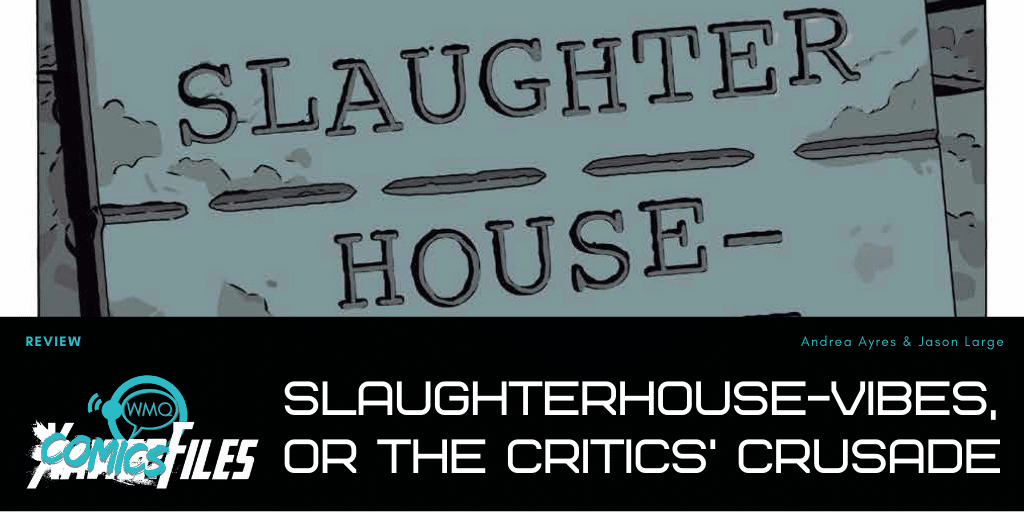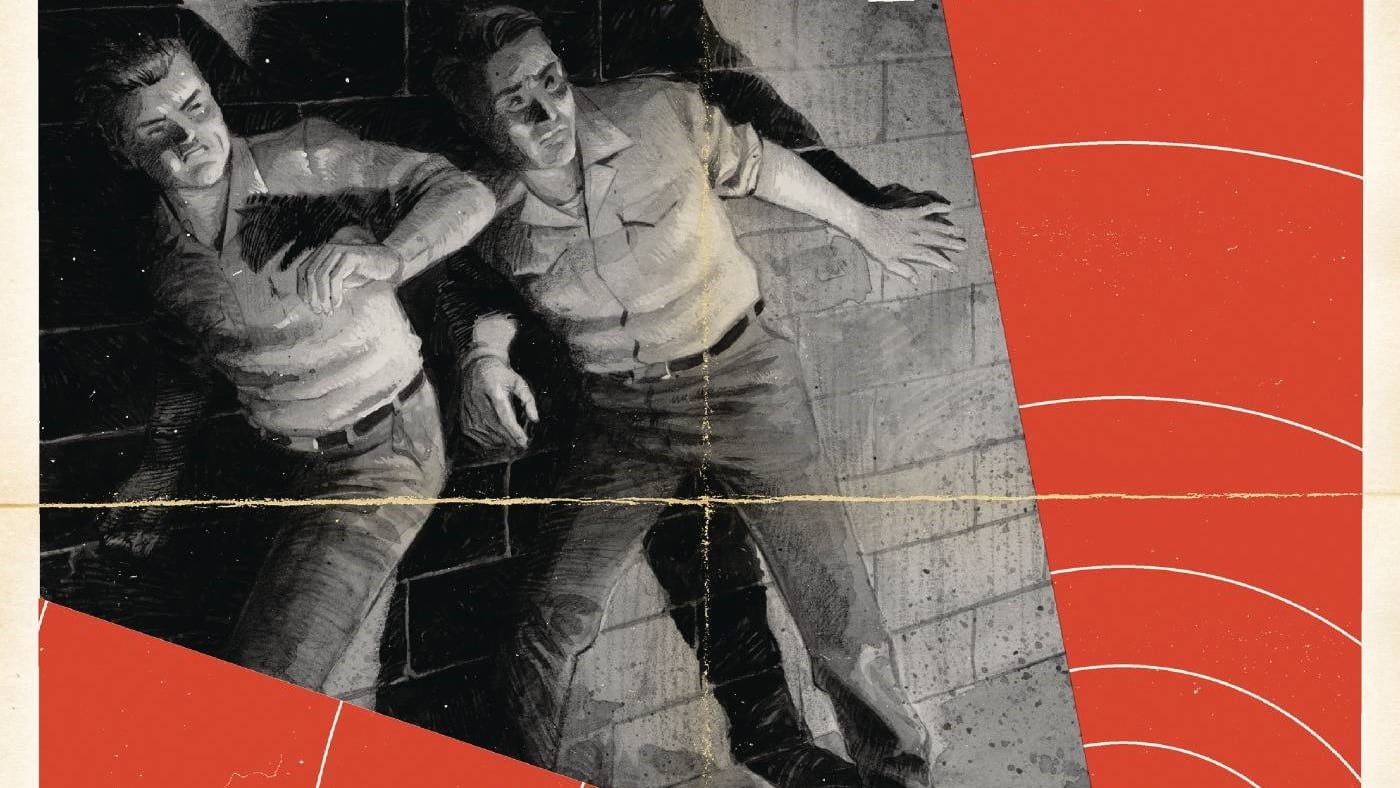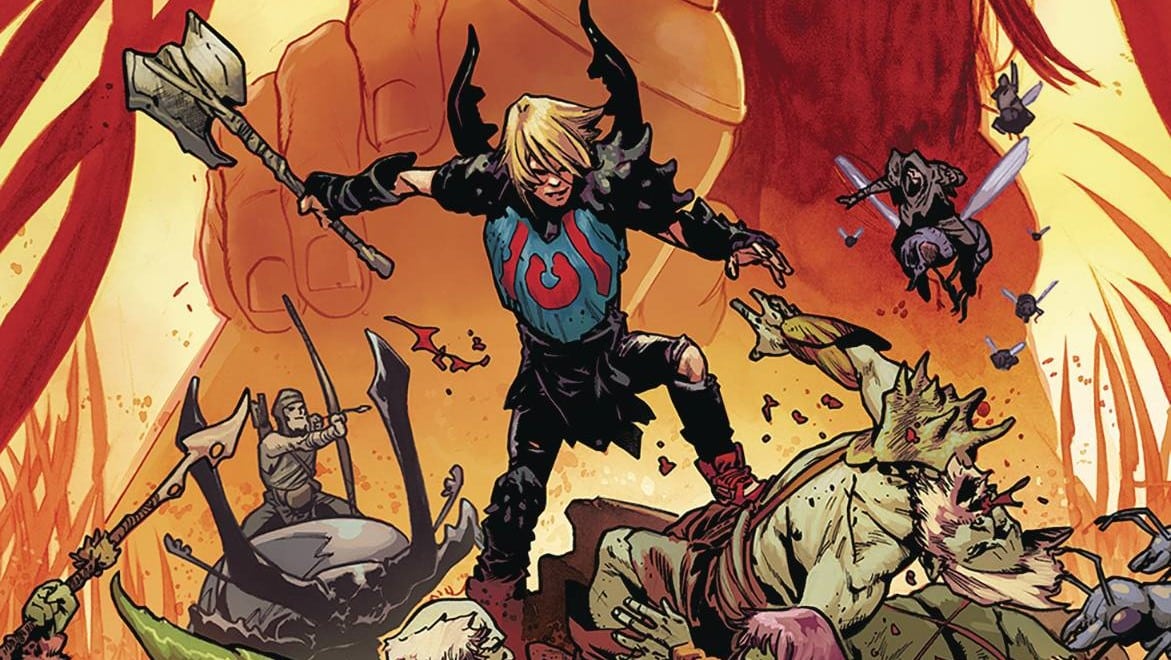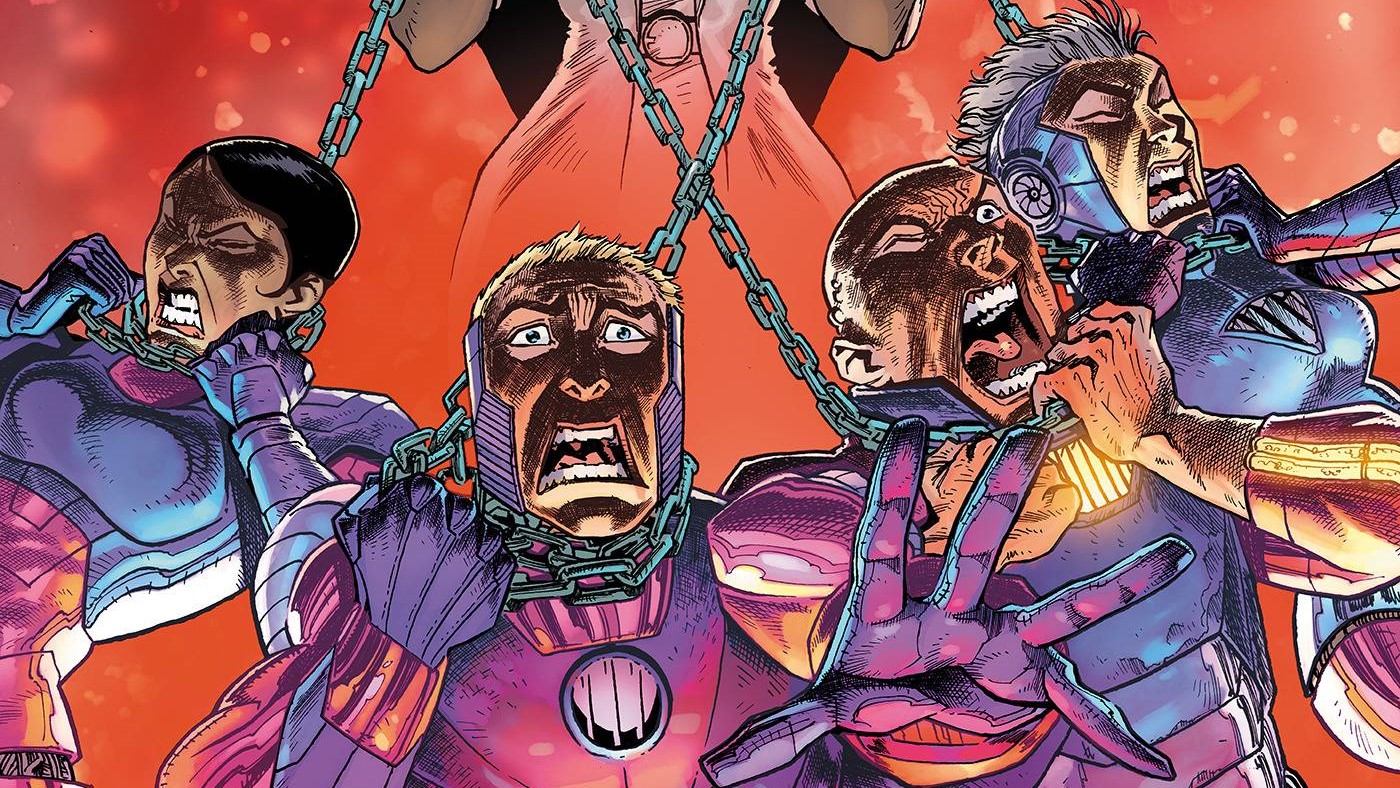The adaptation of Kurt Vonnegut’s Slaughterhouse-Five is here thanks to BOOM Studios, Ryan North and Albert Monteys. Color assistance comes courtesy of Richard Zaplana. The graphic novel adaptation brings Billy Pilgrim’s journey to life and updates it for a new generation of humans toiling with the cost of war, violence and insecurity.

Jason Large: Kurt Vonnegut’s famous satire has been adapted into graphic novel form and written by *checks notes* the Dinosaur Comics guy? And it works?! Luckily I am able to discuss with the ever-lovely Andrea, who can help me make sense of all this.
Andrea Ayres: Jason, you damn scant. A pleasure to chat with you about this book which it feels like people have been talking about 5ever.
JL: As someone who had read a lot of Vonnegut in a short period of time years ago, revisiting Slaughterhouse-Five has made me feel a bit unstuck in time myself. What has your experience with Kurt been like?
AA: *drags from a candy cigarette* College years. So it’s been a second. Vonnegut’s voice isn’t one that has left me. It was amazing to see it come alive so faithfully. Let’s get into it, shall we?
Analyze That
JL: Vonnegut’s ability to use science fiction to depict the effects of trauma on the mind is one of the better descriptors of post-traumatic stress disorder I have been able to understand. Are we truly expected to believe that Billy has come unstuck in time, or has the stress of these events tied into his psyche to an extent that these memories have shuffled through his mind and imprinted on his everyday actions? We rarely see Billy before World War II, but when we do it is also linked to periods of psychological torment. Everything Billy seems to do, no matter how mundane, slides into those final months of the second world war in Europe.
AA: As a child, I became convinced I had already lived this exact life before. The idea of being stuck in time or unstuck in time has followed me. Sometimes I am terrified of being a passenger in my life. I feel stuck like I could float above myself and watch my life go on until it was too late to make any kind of change. That’s my fear. I use humor to try and make that less scary, but it is. Alas. Trapped in amber.
Vonnegut’s humor resonates with me because it strikes me as a very Midwestern kinda thing. Perhaps just my family kind of thing? What Kurt knew about humans better than most is we truly are a ghastly bunch. Yet somewhere in that mess of flesh is the hope we will improve.
My grandpa was stationed in Germany at the end of WWII. We have the love letters he and Grandma shared. He never talked about what he saw. He did become an alcoholic. War demands everything. Vonnegut knew this better than most; that’s why Slaughterhouse-Five feels as prescient now as it ever was. As Vonnegut says, all wars are a Children’s Crusade. Having read this adaptation, is it making you reflect on Vonnegut differently?
JL: I don’t know if it’s a change for the adaptation or a change in me since I first read this, but I seem to be much more understanding of Billy and his actions here. His actions show that while his body had come unstuck in time, his mind was very much stuck in 1945.
AA: That’s similar to the experience I had. I was diagnosed with PTSD almost a year ago. It’s funny how a diagnosis changes the lens from which you view your entire life. But boy howdy does it! My therapist knows I love a metaphor. She’s always giving me new ones, and I gobble them up. Here’s one of my favorites about traumatic memory processing courtesy of Mike Davison.
That’s where Billy Pilgrim is. He is stuck in the war, and because he has never allowed himself to fully experience the emotions or feelings about it, the war is always happening. It has never been allowed to become a thing of the past. This is what PTSD does. It unmoors you. You try to put down an anchor, and still, nothing. No matter what good is happening now, trauma calls you to the past.
I was able to process some of my trauma by working with my therapist and confronting the most painful memory and experiencing all of the emotions. Was it easy? No. Definitely not something I’d recommend doing at parties. By allowing myself to feel the emotions and sinking into them, however, I was able to process the trauma and move it to the past where it belongs.
Vonnegut uses Billy as the lens for which to view the war and present his anti-war manifesto. Kurt is obviously present in the book, notably when he is shitting his brains out. Seeing Kurt at various points in the novel demonstrates the self-awareness he’s known for. He has no problem in critiquing his own failing and moral ineptitude, but there is still some distancing happening. There’s still an uncomfortableness present, and that comes through in the graphic novel.
Adapt This

JL: I am often wary of adaptations as there are so many ways it can go wrong. To get one right, you need to capture the tone of the work and present the original ideas without adding or taking away too much. Luckily, I think North and Monteys were able to nail this.
AA: Yep, I totally agree. Vonnegut’s voice felt so present? God, I hate myself for writing that sentence, but it’s true, dammit. One change definitely for the better was in Billy’s treatment of his wife. Not that he’s great to her in this adaptation, but we thankfully don’t have to see her described as a very large and obese woman who threatens to crush Billy.
JL: Absolutely. While obviously not great behavior, the graphic novel very much portrays his indiscretions as something that happens to him rather than something he is fully aware of participating in, where the book seemed to link Billy’s frustrations to lashing out (or maybe I’m making excuses for him being a terrible husband).
AA: Hahaha. I don’t think you are making excuses. I think Billy largely views many of his actions exactly as you say, something happening to him. He isn’t present in his life, and the treatment of his wife and children demonstrates this with painful clarity.
JL: Something I love with Vonnegut’s writing is how easily he is able to transition between the narrator providing context to character action and addressing the reader directly. It’s not quite fourth-wall breaking but introduces a familiarity with the reader that has always stuck with me as distinctly Vonnegut. The mix of word balloons and captions presented in the graphic novel are able to replicate this feeling better than I could have imagined.
AA: Abso-freakin’-lutely. There were so many parts of the graphic novel that stand out to me that I could truly not pick my favorite. Power, politics, war and violence, all the vices of humans are always replicating themselves. The inclusion of “Gutless Wonder” is a great example of this.
Obviously about the Vietnam War, but very much could be about most of the current administration. Filled with gutless wonders. I can’t get over how good Albert Monteys’ art is and how they just freaking nail it every damn page.
JL: This is the first time I am reading something with art by Albert Monteys. Given the title’s need to jump between different locations and time periods at times within the same panel, Monteys did a wonderful job of establishing character ages (specifically Billy Pilgrim) and using color to help show a change in a way that makes the transitions easy to follow.
AA: This may be an instance where I just agree with you the entire time, OK? I feel like this adaptation makes the absolute most of the graphic form. North and Monteys are using every tool at their disposal. The series of pages where Billy is watching the movie backward through the use of storyboards was phenomenal. Also notable is the translation of Kilgore Trout’s work. I thought it was just lovely, and it made me feel like a graphic adaptation is the only one that could ever work. I know Hollywood has been trying to adapt this for years.
JL: The scene with Billy watching the movie in reverse is not only the highlight of the novel but one of the best-illustrated sequences I’ve read in a long time.
Don’t Sleep

JL: Slaughterhouse-Five, along with almost all of Vonnegut’s work, can talk about some dreary subjects in a way that actually makes you feel better about yourself and others. The characters you care about always seem to be people (with all their flaws) who generally wish to be nice to others, even when it seems like few others share that intention.
If you are a fan of any of the creators’ work that is present here, I would recommend picking this up. I will say that halfway through reading this, I got an awful case of food poisoning, which I do not recommend to anyone. So book = yes. Poisoning = no. I’m also pretty sure avoiding food poisoning applies outside of reading as well … really whenever possible.
AA: The Tralfamadorians know what’s up. They know how the universe will end, but it doesn’t stop them from experiencing life. Living in the present is difficult. It consistently feels as if we are drowning in the imperfection of our own species, yet it’s all we’ve got. There is a kind of peace there if we allow it. Humans aren’t good at a lot of things, but we are good at one: finding hope, even in the face of certain death. So it goes…
Last Thoughts
- Now I want a Cat’s Cradle adaptation.
- I miss Unbeatable Squirrel Girl.
- “That’s the attractive thing about war. Absolutely everybody gets a little something.”
- I’m exercising a decent amount of restraint not just adding a ton of Vonnegut quotes that have nothing to do with Slaughterhouse-Five.









